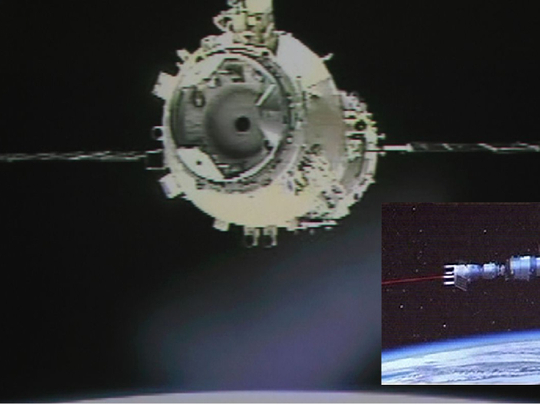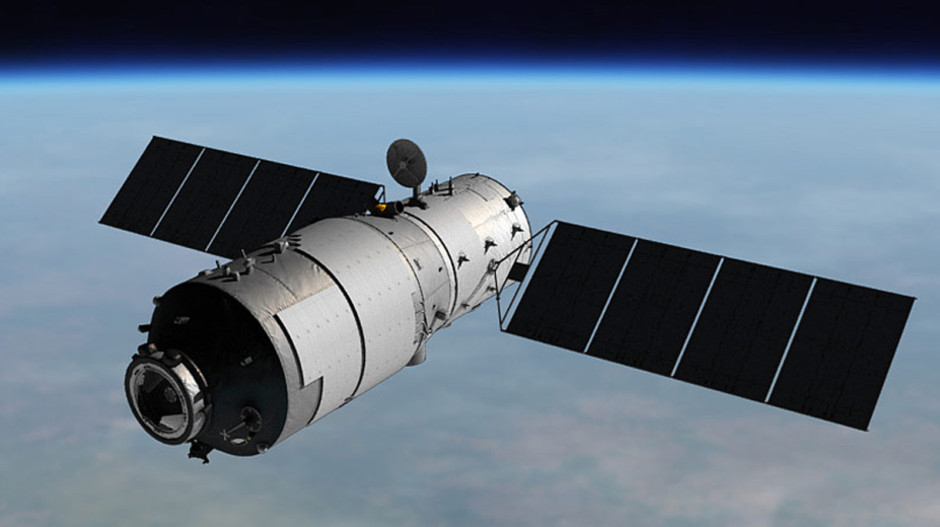
An out-of-control Chinese space station is set to smash into earth from as early as March 24, according to experts.
But space observers are unsure where 8.5-ton spacecraft would land — it is currently losing altitude at the rate of 6km per week due to atmospheric drag.
Launched in September 2011, Tiangong 1 (Chinese for "heavenly palace") was China's first prototype space station, serving as both a manned laboratory and an experimental testbed to demonstrate orbital rendezvous and docking.
The Chinese National Space Administration (CNSA) extended the spacecraft's life for two years until they lost telemetry in March 2016.
By June 2016, amateur satellite watchers reported that the station was out of control. CNSA finally admitted that fact three months later, in September 2016.
In October last year, a flaming fireball was seen descending over the UAE's night sky — which turned out to be the Russian space junk "SL-4 R/B" as it burned upon re-entry into the earth's atmosphere.
Astrophysicist Jonathan McDowell twitted that he's been observing Tiangong-1(Chinese for "Heavenly Palace") as its makes it final weeks around the earth.
Observing Tiangong https://t.co/J2hJ7HtWGQ
— Jonathan McDowell (@planet4589) March 8, 2018
According to ESA officials in Germany, the Tiangong-1 will likely re-enter the atmosphere between 43°North and 43°South, but areas outside this latitude cannot be excluded.
And now, it's impossible to predict even an approximate landing site until hours before re-entry. Scientists at the European Space Agency (ESA) predict that Tiangong-1's burn-up to be sometime between March 24th and April 19th.
China's Tiangong-1 space station to crash into Earth within few weeks but location of impact is not yet predicted.#Kartwheel #Space #Satellite pic.twitter.com/PsYoJssJ03
— Kartwheel (@kwcdigital) March 6, 2018
The abandoned space module is currently hurtling around the planet at an altitude of 150 miles, circling the globe at 18,000mph.
Originally, the space station was intended to be de-orbited with a controlled thruster burn for a safe breakup over the Pacific Ocean.
But without telemetry today, the wayward spacecraft can no longer be controlled, and its final burnup path is uncertain.
Re-entry depends entirely on atmospheric drag complicated by the effects of space weather, which is driven by the Sun.
China’s first space station – Tiangong-1 (Heavenly Palace 1) due for uncontrolled re-entry, soon https://t.co/Nt2dRxKQRH
— EarthSky (@earthskyscience) March 8, 2018
Map shows the area between 42.8 degrees north and 42.8 degrees south latitude (in green), over which Tiangong-1 could reenter. Image via ESA CC BY-SA IGO 3.0. pic.twitter.com/x5zZDPFAIw
The only thing for sure is that Tiangong-1 will hit the earth soon — and it may be tracked on this site, space experts said.
Satflare, a space tracking site, reported that most parts of the Tiangong-1 (Norad ID: 37820) are expected to burn up as it crashes back to earth.
However, the site said, "some parts may reach the ground".















